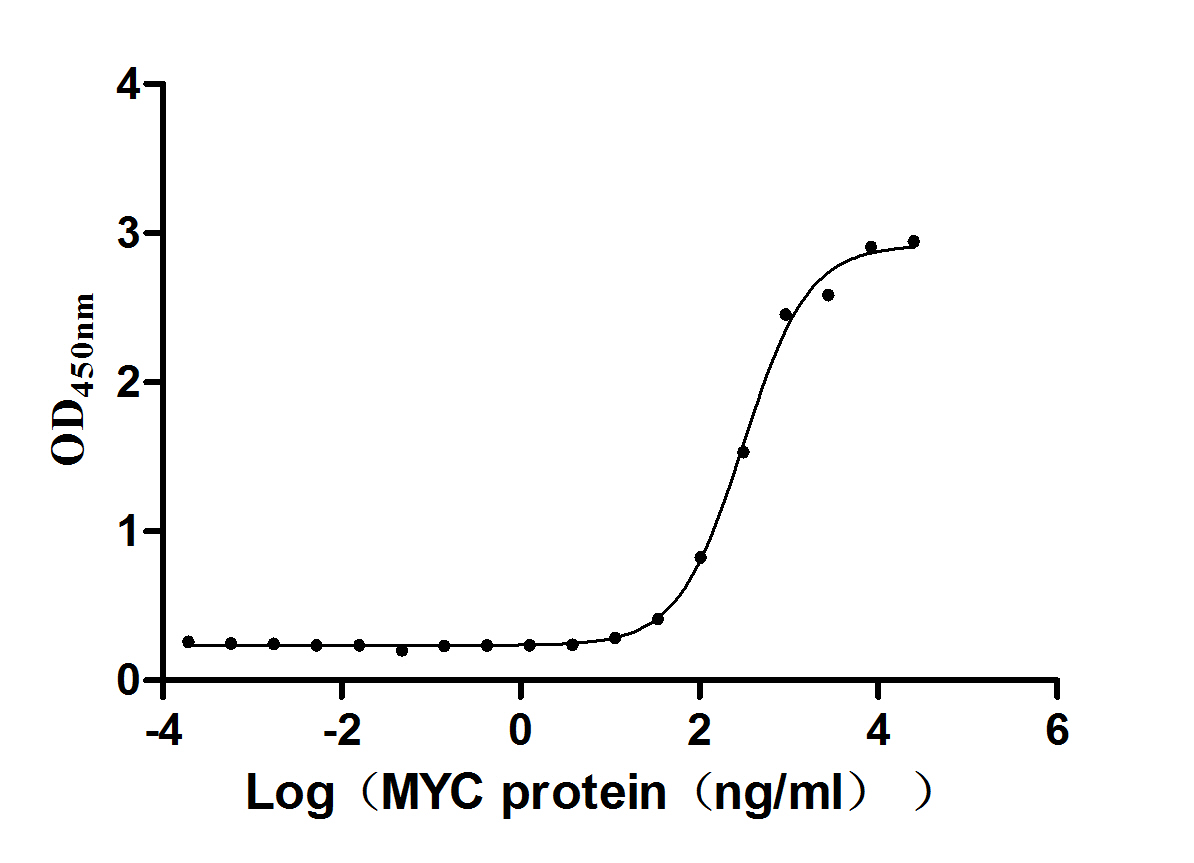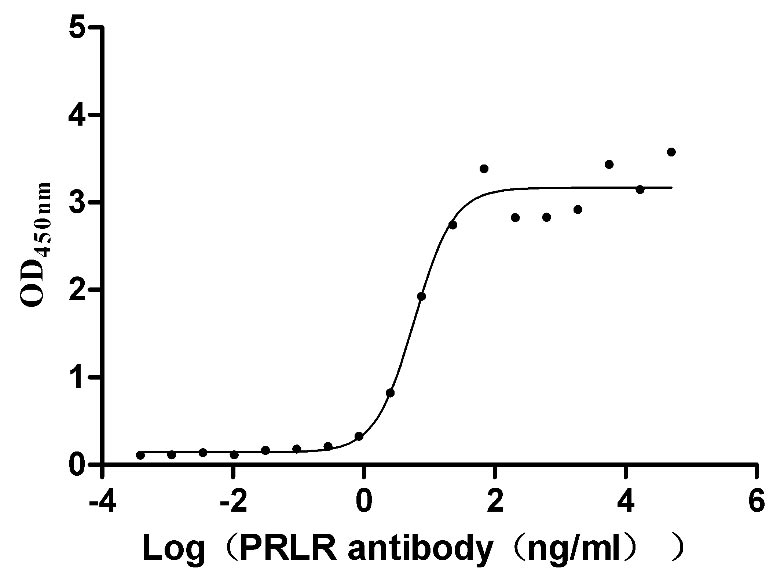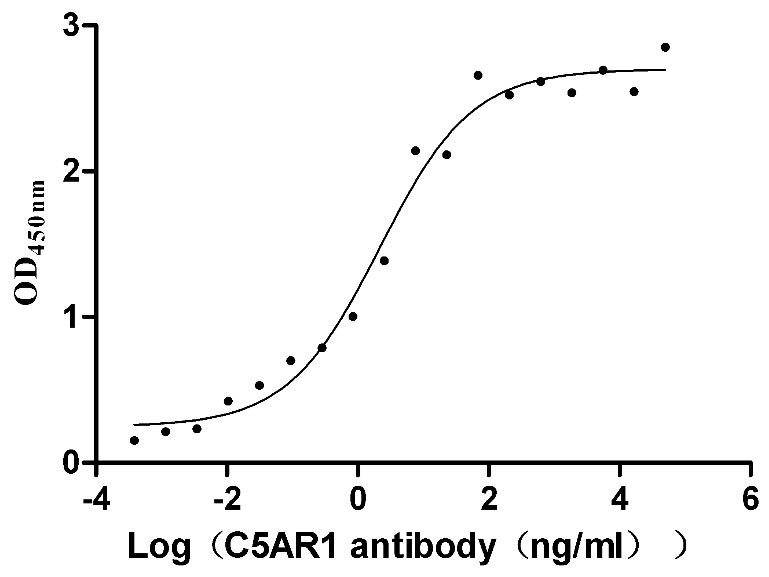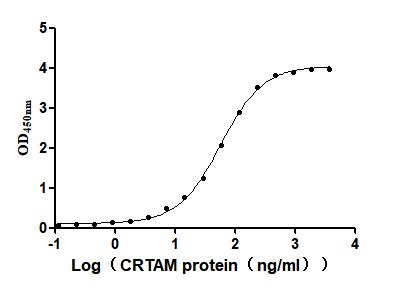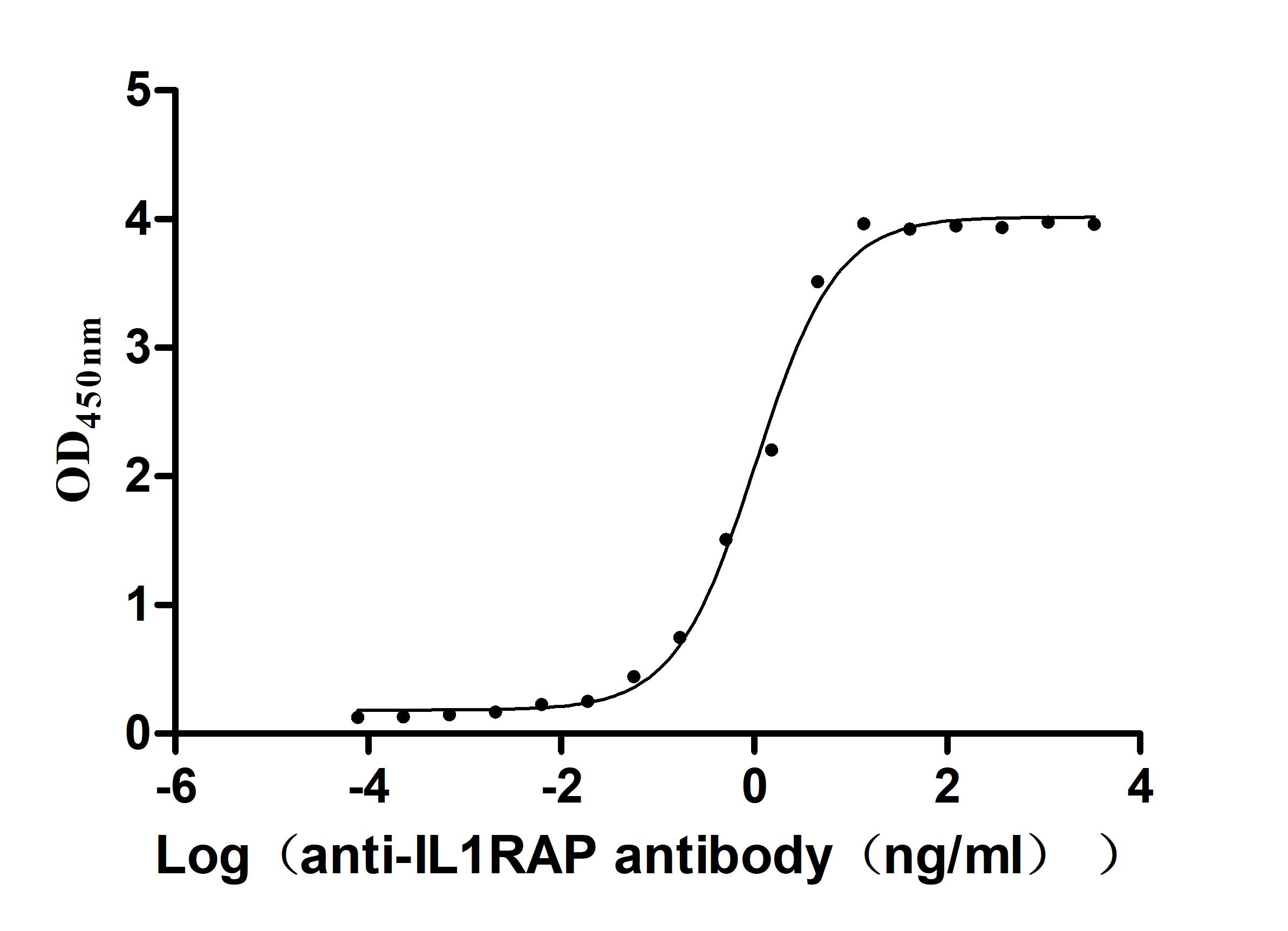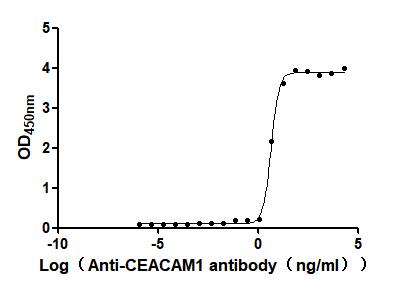Recombinant Mouse Cadherin EGF LAG seven-pass G-type receptor 3 (Celsr3), partial
-
中文名稱:Recombinant Mouse Cadherin EGF LAG seven-pass G-type receptor 3(Celsr3) ,partial
-
貨號:CSB-YP852817MO
-
規(guī)格:
-
來源:Yeast
-
其他:
-
中文名稱:Recombinant Mouse Cadherin EGF LAG seven-pass G-type receptor 3(Celsr3) ,partial
-
貨號:CSB-EP852817MO
-
規(guī)格:
-
來源:E.coli
-
其他:
-
中文名稱:Recombinant Mouse Cadherin EGF LAG seven-pass G-type receptor 3(Celsr3) ,partial
-
貨號:CSB-EP852817MO-B
-
規(guī)格:
-
來源:E.coli
-
共軛:Avi-tag Biotinylated
E. coli biotin ligase (BirA) is highly specific in covalently attaching biotin to the 15 amino acid AviTag peptide. This recombinant protein was biotinylated in vivo by AviTag-BirA technology, which method is BriA catalyzes amide linkage between the biotin and the specific lysine of the AviTag.
-
其他:
-
中文名稱:Recombinant Mouse Cadherin EGF LAG seven-pass G-type receptor 3(Celsr3) ,partial
-
貨號:CSB-BP852817MO
-
規(guī)格:
-
來源:Baculovirus
-
其他:
-
中文名稱:Recombinant Mouse Cadherin EGF LAG seven-pass G-type receptor 3(Celsr3) ,partial
-
貨號:CSB-MP852817MO
-
規(guī)格:
-
來源:Mammalian cell
-
其他:
產(chǎn)品詳情
-
純度:>85% (SDS-PAGE)
-
基因名:
-
Uniprot No.:
-
別名:Celsr3Cadherin EGF LAG seven-pass G-type receptor 3
-
種屬:Mus musculus (Mouse)
-
蛋白長度:Partial
-
蛋白標(biāo)簽:Tag?type?will?be?determined?during?the?manufacturing?process.
The tag type will be determined during production process. If you have specified tag type, please tell us and we will develop the specified tag preferentially. -
產(chǎn)品提供形式:Lyophilized powder
Note: We will preferentially ship the format that we have in stock, however, if you have any special requirement for the format, please remark your requirement when placing the order, we will prepare according to your demand. -
復(fù)溶:We recommend that this vial be briefly centrifuged prior to opening to bring the contents to the bottom. Please reconstitute protein in deionized sterile water to a concentration of 0.1-1.0 mg/mL.We recommend to add 5-50% of glycerol (final concentration) and aliquot for long-term storage at -20℃/-80℃. Our default final concentration of glycerol is 50%. Customers could use it as reference.
-
儲存條件:Store at -20°C/-80°C upon receipt, aliquoting is necessary for mutiple use. Avoid repeated freeze-thaw cycles.
-
保質(zhì)期:The shelf life is related to many factors, storage state, buffer ingredients, storage temperature and the stability of the protein itself.
Generally, the shelf life of liquid form is 6 months at -20°C/-80°C. The shelf life of lyophilized form is 12 months at -20°C/-80°C. -
貨期:Delivery time may differ from different purchasing way or location, please kindly consult your local distributors for specific delivery time.Note: All of our proteins are default shipped with normal blue ice packs, if you request to ship with dry ice, please communicate with us in advance and extra fees will be charged.
-
注意事項(xiàng):Repeated freezing and thawing is not recommended. Store working aliquots at 4°C for up to one week.
-
Datasheet :Please contact us to get it.
靶點(diǎn)詳情
-
功能:Receptor that may have an important role in cell/cell signaling during nervous system formation.
-
基因功能參考文獻(xiàn):
- Celsr3 is dispensable for the patterning of central dorsal root ganglion projections, but it regulates for the fine mapping of sensory fibers in the gray matter, which is important for somatosensory processing. PMID: 28754314
- Results suggest that Celsr3 and Fzd3 orchestrate the formation of a scaffold of pioneer neurons and their axons during embryogenesis. This scaffold extends from prethalamus to ventral telencephalon and subcortex, and steers reciprocal corticothalamic fibers. PMID: 27170656
- Celsr3 and Fzd3 enable immature neurons to respond to Wnt7, upregulate Jag1 and thereby facilitate feedback signals that tune the timing of neural progenitor cell fate decisions via Notch activation. PMID: 26939553
- Our results provide evidence that the Celsr3-Fzd3 pathway interacts with EphA-ephrinA reverse signaling to guide motor axons in the hindlimb. PMID: 25108913
- The essential role of Celsr3 in globus pallidus development. PMID: 25113559
- This study demonistrated that Celsr3/Foxg1 mutation mice show the spinal motor network does not mature fully in the absence of corticofugal connections, and that some motor function is preserved despite congenital absence of the corticospinal tract. PMID: 24012835
- Celsr3 and Fzd3 are required during murine embryogenesis to specifically control the guidance and growth of enteric neuronal projections relative to the longitudinal and radial gut axes. PMID: 23478408
- Celsr3/Foxg1 & Celsr3/Dlx mutant mice were hyperactive, learning- & memory-impaired. Celsr3/Foxg1 caused abnormal cytoarchitecture of CA1, CA3, & dentate gyrus. Celsr3|Dlx mildly affected hippocampal and extrinsic & intrinsic connectivity. PMID: 23035085
- Celsr2 and Celsr3 control the development and function of ependymal cilia; findings suggest that planar cell polarity signaling is involved in ependymal cilia development and in the pathophysiology of hydrocephalus, and possibly other ciliopathies PMID: 20473291
- Developmental expression profiles of Celsr (Flamingo) genes in the mouse PMID: 11850187
- Differential expression of the seven-pass transmembrane cadherin genes Celsr1-3 and distribution of the Celsr2 protein during mouse development PMID: 11891983
- Celsr3 is crucial in axonal tract development. PMID: 15778712
- observations provide in vivo evidence that Celsr3-mediated interactions between axons and guidepost cells govern axonal tract formation in mammals PMID: 18487195
- The atypical cadherin Celsr3 regulates the development of the axonal blueprint. PMID: 18494256
- The protocadherin Celsr3 gene is essential for both tangential and radial interneuron migrations in a class-specific manner. PMID: 19332558
- These observations provide unequivocal in vivo evidence that heterotypic interactions between axons and guidepost cells govern axonal path formation in mammals, and that Celsr3 plays a key role in this process. PMID: 19349379
顯示更多
收起更多
-
亞細(xì)胞定位:Cell membrane; Multi-pass membrane protein.
-
蛋白家族:G-protein coupled receptor 2 family, LN-TM7 subfamily
-
組織特異性:Expressed in the CNS and in the eye.
-
數(shù)據(jù)庫鏈接:
STRING: 10090.ENSMUSP00000024238
UniGene: Mm.39945
Most popular with customers
-
Recombinant Human papillomavirus type 16 Protein E7 (E7) (Active)
Express system: E.coli
Species: Human papillomavirus type 16
-
Recombinant Mouse Prolactin receptor (Prlr), partial (Active)
Express system: Mammalian cell
Species: Mus musculus (Mouse)
-
Recombinant Human C5a anaphylatoxin chemotactic receptor 1 (C5AR1)-VLPs (Active)
Express system: Mammalian cell
Species: Homo sapiens (Human)
-
Recombinant Mouse Cytotoxic and regulatory T-cell molecule (Crtam), partial (Active)
Express system: Mammalian cell
Species: Mus musculus (Mouse)
-
Recombinant Macaca fascicularis Interleukin 1 receptor accessory protein(IL1RAP), partial (Active)
Express system: Mammalian cell
Species: Macaca fascicularis (Crab-eating macaque) (Cynomolgus monkey)
-
Express system: Mammalian cell
Species: Homo sapiens (Human)


